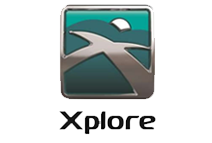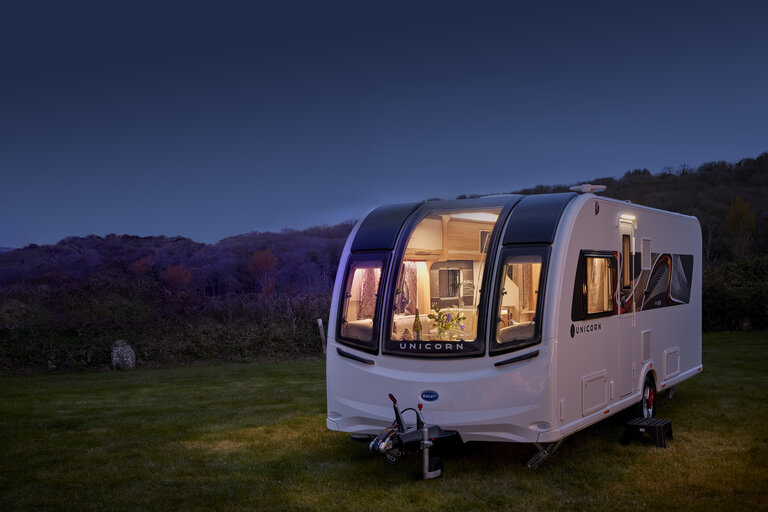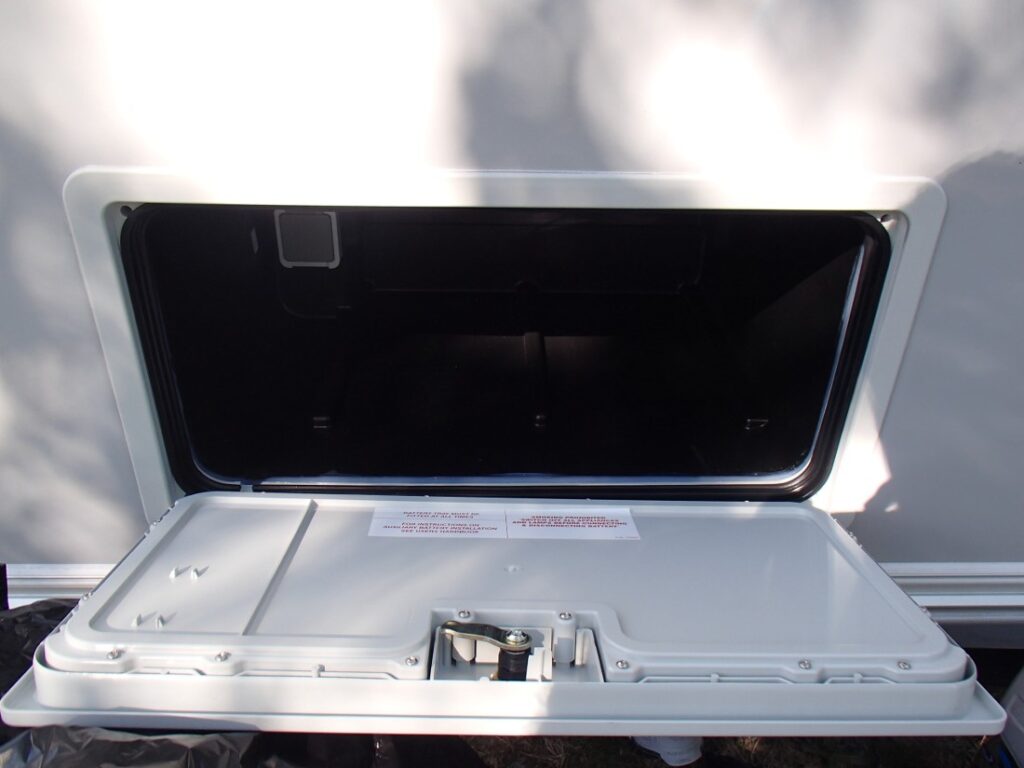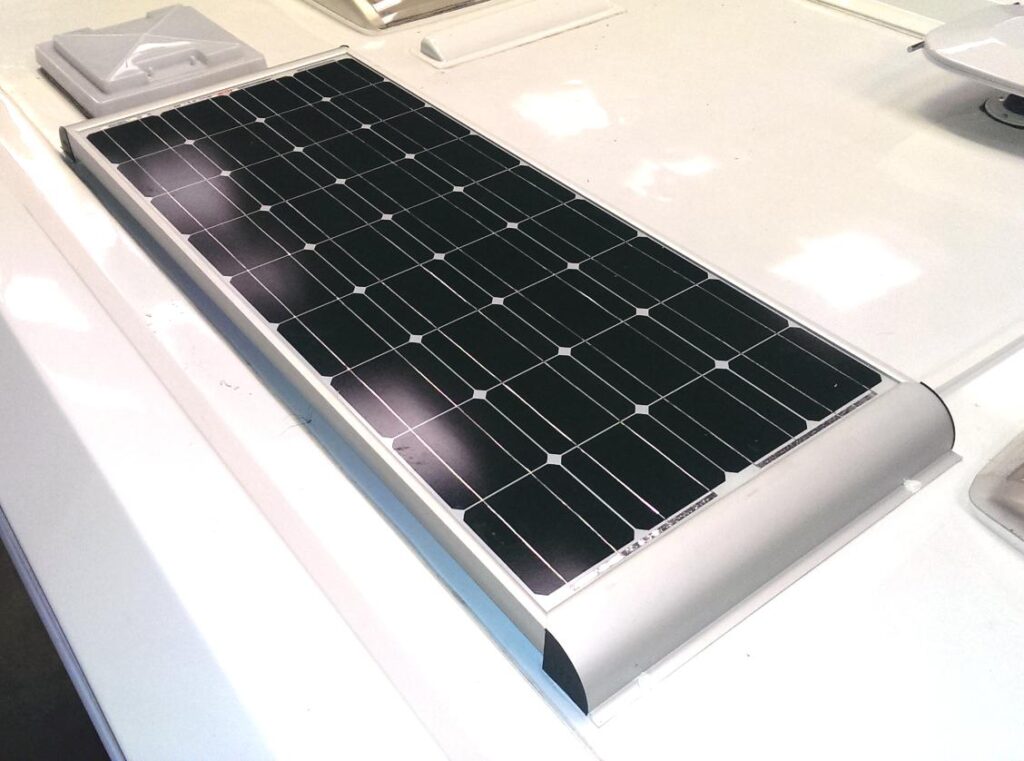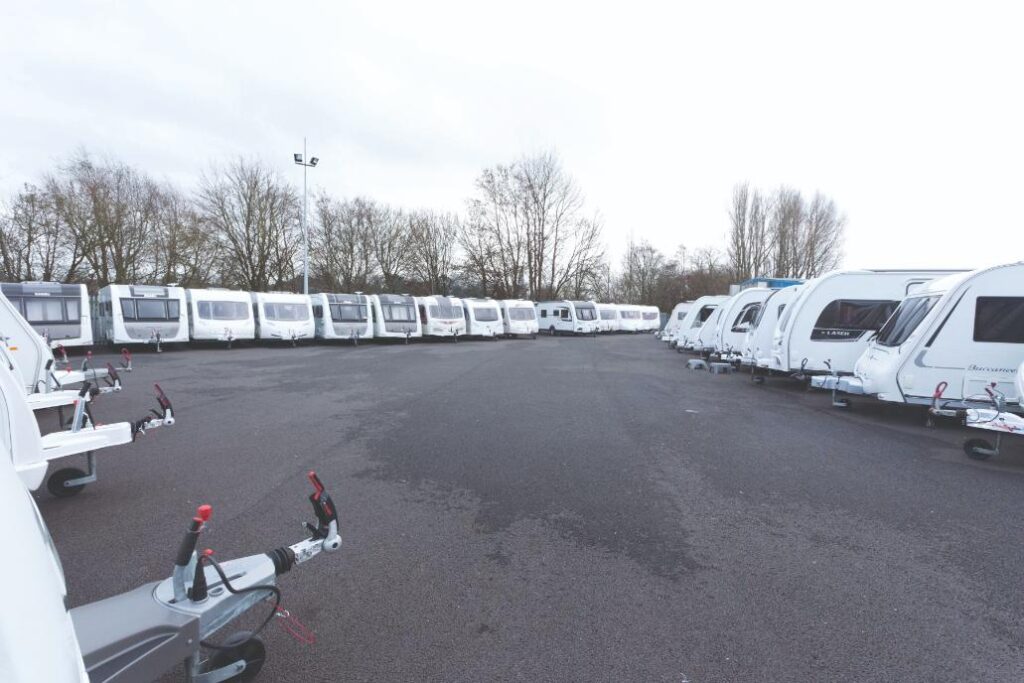Raymond James Caravans’ comprehensive guide to caravan terminology. Jargon busted!
Like many specialist interests, caravanning and motorhoming have lots of unique words, terms, and abbreviations that you need to understand. Some are very important, as they involve your safety and legality.
So, to understand why MiRO is different to MTPLM, and what the 85% rule is, read on…

7 and 13 pin towing electrics
The electrical plug on your caravan that attaches to the car. Your towcar has the female receiver, while the electric cable on the caravan contains the pins.
7-pins are the older design for caravans and trailers and don’t supply power to as many facilities as a more modern 13-pin plug.
7-pin plugs only power the lights, indicators, brake lights, and fog lights; while 13-pin sockets also power the fridge and reversing lights.
Once you have positioned the small plastic block into the groove and rotated the socket into place, your van’s lights should be operational. As well as the lights of the tow car. Occasionally, the block and groove can become misaligned, preventing the socket from pushing into place.
In this case, use a Plug Socket Alignment Tool to realign the two parts. Typically, these cost about £5 online.
The 85% rule (for novices)
This rule is not a law, but a recommended safety guideline for novice caravanners to match their tow car and caravan. The caravan’s MTPLM weight should not be more than 85% of your tow car’s kerbweight. Eg: a 1500kg caravan requires a tow car weighing 1765kg for safe towing by a novice.
The 100% rule (for experienced caravanners)
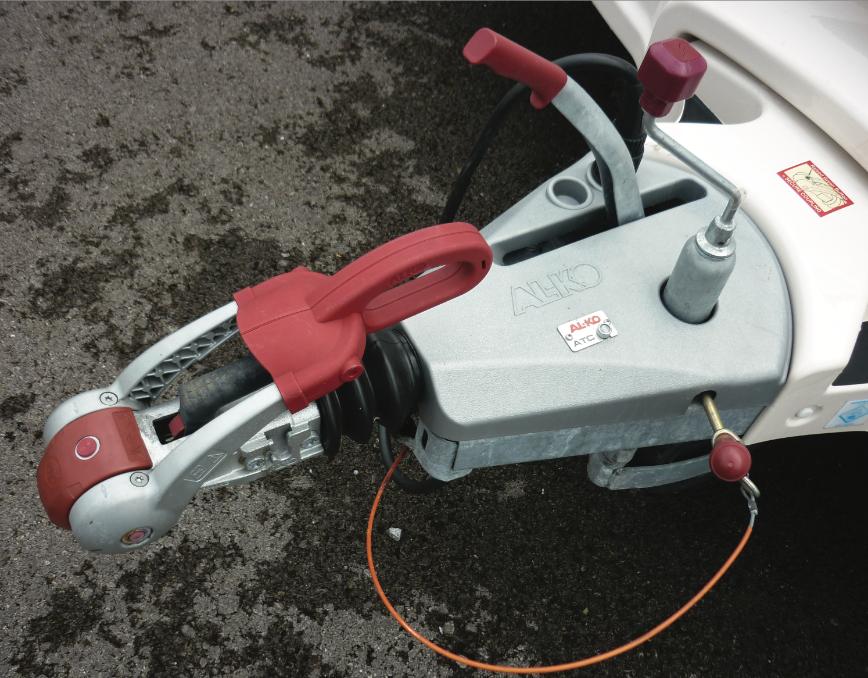
As you become a more experienced tow car driver, you can extend the 85% rule to 100%. For example, a 1500kg caravan requires a tow car with a 1500 kg kerbweight.
A-frame
The metal A-shaped frame at the front of a caravan, with the hitch-head on the end. As well as the tow hitch, you’ll find the breakaway cable, jockey wheel, handbrake, and the ATC indicator light and AL-KO stabiliser here. Usually, they have a plastic moulded fairing.
ABS
The type of strong and resilient plastic used to make many caravan panels. It’s an abbreviation for acrylonitrile-butadiene-styrene.
Actual laden weight
This number is the total weight of a caravan and its contents combined (when towed). This figure should not exceed the Maximum Technically Permissible Laden Mass (MTPLM) of the caravan. Or the police could pull you over, fine you, and have to remove weight from your caravan.
Air awning

An awning that uses inflatable air beams instead of metal poles in its construction. These are lighter-weight, quicker, and easier to erect, and very sturdy when put-up properly.
AL-KO ATC

AL-KO’s ATC (AL-KO Trailer Control) is an anti-snaking system for caravans. It detects the early signs of a caravan getting out of control and automatically applies the brakes to pull the van back in line.
AL-KO chassis
Most new caravans are built on a strong, but lightweight, galvanised steel chassis made by the German company, AL-KO.
Aquaroll
A branded rolling water carrier, which you can pull along with a long handle, rather than carry. The name has become the generic term for water carriers that roll, but other brands are available.
Awning
A tent-like construction that attaches to the side of the caravan to give more living and storage space. They are made of fabric stretched over a frame. Frames once composed of steel poles are now built with rigid inflatable beams. more often due to their lightweight and the ease of inflation.
Awning length
The size of many awnings is expressed as their length in centimetres. It’s the total length of the roof and two sides combined – up one side, across t
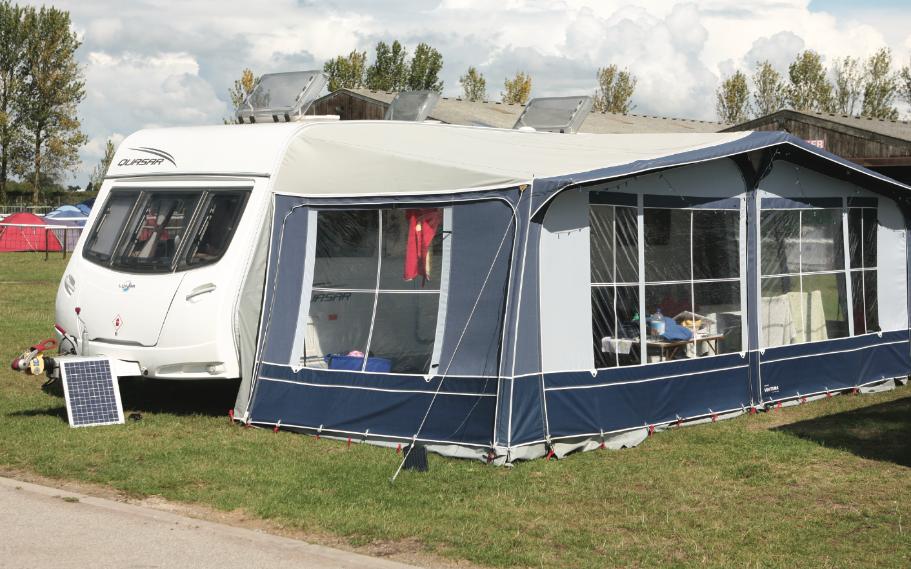
he roof, then down the other side to the ground. Typically, this might range from 750cm to 1100cm.
Awning rail
The rail into which the awning cord is threaded and pulled up, over, and down the other side of the caravan. Full awnings use the entire length of the rail, while porch awnings only use a section of the rail running across the top of the caravan. The rail has several entry points for the cord to be slotted in for porch awning use.
AWS – Approved Workshop Scheme
This National Caravan Council approval-scheme is for caravan engineers that have reached a high level of experience and service delivery. It’s your guarantee of quality service and maintenance.
B+E
See Driving Licences.
Berths
Beds are called berths in caravans. Typically, the number of berths will range from two to six.
Blown-air heating

A popular heating system in modern caravans. A powerful fan blows warm air through ducting pipes and vents to heat the caravan’s interior.
BPW
A German caravan chassis maker. In recent years, BPW has refocused its business away from caravans. But many used tourers will still run on excellent BPW chassis, especially those from the Elddis group.
Breakaway cable
This short steel cable links the caravan handbrake mechanism to the tow car’s towball. It either attaches to it with a carabiner clip or is looped around it). If by chance the caravan ever gets separated from the tow car’s hitch, the breakaway cable will activate the caravan’s handbrake, thus stopping it from moving.
Butane gas
Two types of liquified petroleum gas (LPG) are used in caravanning, for heating, cooking, and even to cool the fridge.
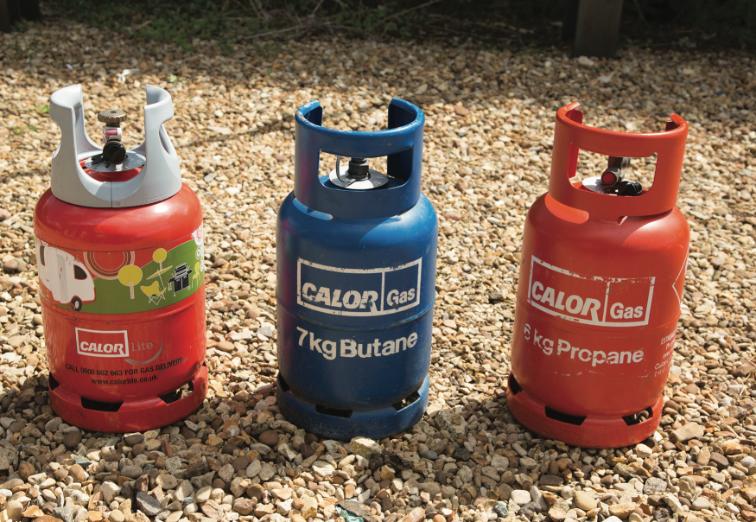
Butane is one, and it comes in Calor’s blue cylinders. Butane has a small energy advantage over the Propane alternative.
However, as it boils at just minus-2°C, it may not work efficiently at lower temperatures, so is therefore only recommended for caravanning in warm weather. All-season caravanners should choose Propane.
Calor
The UK’s major provider of bottled gas. The company has retail partners all around the country and its bottles are also sold at many service stations, DIY shops, and camping outlets.
Caravan Clubs
There are two main caravanning clubs: The Camping and Caravanning Club and The Caravan and Motorhome Club. Both have extensive networks of excellent sites and CSs/CLs, and they also offer members advice, information, events, training, discounts, and other services including travel-agencies, breakdown cover, and insurance.
Carver
Carver is a defunct brand of caravan heaters, that was very popular in the 1990’s and earlier. Carver made space and water heaters. Truma bought it in 1999.

Cassette blind
These roller blinds are fitted as part of the caravan window assembly, and the blind fabric is stored inside the casing when not in use. They often include a flyscreen.
Cassette toilet
A caravan toilet, where the waste tank sits underneath the loo, separated by a blade valve. The cassette is part filled with toilet chemicals and can be accessed through an external hatch. The cassette is removed for emptying and cleaning, then part-filled with chemicals again, before it is replaced in the locker.
Cassette toilet chemicals
Toilet chemicals help keep your cassette toilet clean and in good condition.
Pink chemicals go into the top ‘flush’ tank, while a small amount of blue or green chemicals go into the waste cassette.
The pink chemical lubricates the flush system, rinses the toilet bowl, and helps to keep things fragrant. The blue and green chemicals are designed to break down waste matter and toilet paper, and to prevent smells and the build-up of gases.
Some modern chemicals are considered more eco-friendly as they don’t contain formaldehyde.
CaSSOA

The Caravan Storage Site Owners’ Association is a national body that oversees and rates security measures at caravan storage facilities. Member facilities have to achieve high standards of security, protection and convenience, and the best are recognised with Gold and Platinum status.
Chemical Disposal Point (CDP point)
Chemical Disposal Point or Elsan Points are the place on a campsite where you empty your toilet cassette and rinse it out.
Chemical toilet
A caravan toilet that is self-contained, not connected to the mains drainage. Waste material is held in a sealed tank, ready to be emptied when it’s full (usually indicated by a warning light). Thetford and Dometic are the main manufacturers. See: Cassette toilet
CS or CL sites
These small campsites have five pitches or fewer. Most have limited facilities. which is reflected in their prices. Some have washing facilities and hook-ups, but many are designed for off-grid caravanning.
Often, they are in the stunning, unspoilt locations, where planning permission for more extensive campsites wouldn’t be allowed.
Corner steady

Most caravans have four corner steadies, wind down legs attached to each corner of the underside of the caravan floor. Once a caravan is levelled, the steadies are wound down to keep it stable.
CRiS (check)
The Central Registration and Identification Scheme (CRiS), sees every UK caravan (since 1992) given a unique ID number and added to a register. This ID is linked to the owner’s contact details, so the two can be reunited in the event of a theft.
Like an automotive HPI check, caravans with CRiS can also be ‘history-checked’, highlighting if, for example, they have ever been written off or stolen in the past. When buying a new caravan, always check that all the CRiS numbers on the windows or tamper-proof sticker match the documentation.
Defaqto
An organisation that evaluates the services offered by insurance policies, including those for caravanners, giving the best a five-star rating.
Delamination
Delamination is when the bonded layers of a multi-ply/sandwich-construction panel, start to separate. Usually, water ingress, or poor lamination in the manufacturing process causes this problem.
Dinette

Also called a side-diner, this is a compact dining area in a caravan with parallel sofas and a table in between, or a C-shaped sofa around a table. Usually, these dinettes can be converted into a large single or small double bed.
Driving licences
Up until 16th December 2021, if you passed your test on or after 1st January 1997, you had to take an additional B+E towing test to allow you to tow the same weight trailer/caravan as those drivers who passed their test before that date.
The government removed this restriction in 2021, meaning that anyone who passed their test after 1st January 1997, can now tow caravans weighing up to 3500kg… that’s every modern touring caravan.
Before choosing a car/caravan combination, check your tow car’s Gross Train Weight (GTW) – the maximum allowable weight of the car plus caravan plus payload.
Electric hook-up (EHU)
See: Mains hook-up.
Elevating roof (Pop-Top)

Some smaller caravans have a pop-up roof to increase the headroom inside for taller caravanners. These caravans generally have fabric-covered sides and a solid top. These aspects make them more aerodynamic when towed, resulting in better fuel economy, easier parking, and simpler storage.
Flame-failure cut-out
Caravan gas appliances should have these fitted. They stop the escape of gas inside the caravan if a flame blows out.
Flogas
Flogas is a nationwide distributor of gas bottles and products in the UK. Check online for your nearest outlet.
French bed
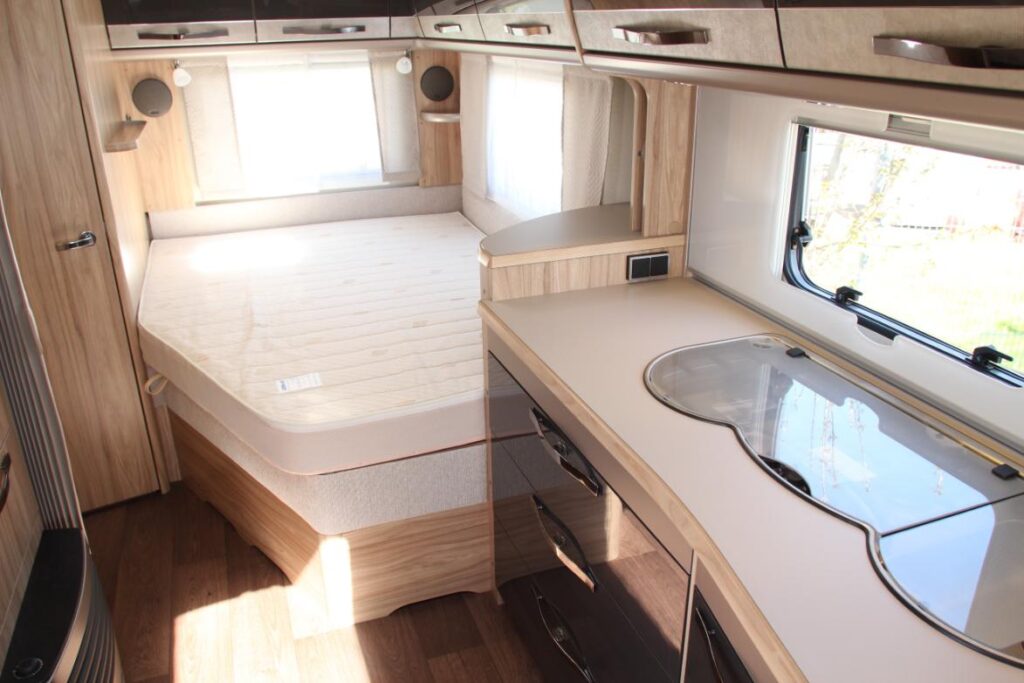
A double bed enclosed on two or three sides, meaning one occupant may have to climb over the other to exit the bed.
Full-service pitch
A premium campsite pitch which has a fresh water supply and a wastewater drain, along with a hook-up post and, sometimes, a TV aerial connection. Usually these are more expensive than standard pitches.
Garage

A large storage space for transporting bulky items like barbecues, bicycles , and other outdoor gear. They can be accessed from outside the caravan and are more common on motorhomes, though the Knaus Sport & Fun caravan does feature a large garage.
Gas locker
An external locker, accessible only from the outside of the caravan, where gas bottles are stored. Front-end gas lockers tend to be large and may contain other equipment like a spare wheel, while a small number of caravans have more-compact side gas lockers.
Grab handles
Large handles located at each corner of the caravan that are used to hand-manoeuvre the caravan onto its pitch or into its storage position.
Grey water
The wastewater from your caravan’s shower, basin and sink. This is collected in a grey-waste container outside the caravan and must be emptied in a dedicated disposal point wherever possible.
Gross train weight
This is the total weight of the tow car, caravan, and payload. It should not exceed the amount of the caravan’s MTPLM and tow car’s Gross Vehicle Weight combined (see below).
Gross vehicle weight (GVW)
The weight of the tow car loaded to its maximum safe level, as stated by the vehicle manufacturer.
GRP
Glass-reinforced plastic, a versatile and strong material often used to make the curved front and back panels of a caravan. It’s also known as fibreglass or glass-fibre.
It is hardwearing and resistant to small dents and scratches, but older GRP panels can suffer from ‘chalking’ when the material dries out, breaks down and becomes dusty.
Hardstanding
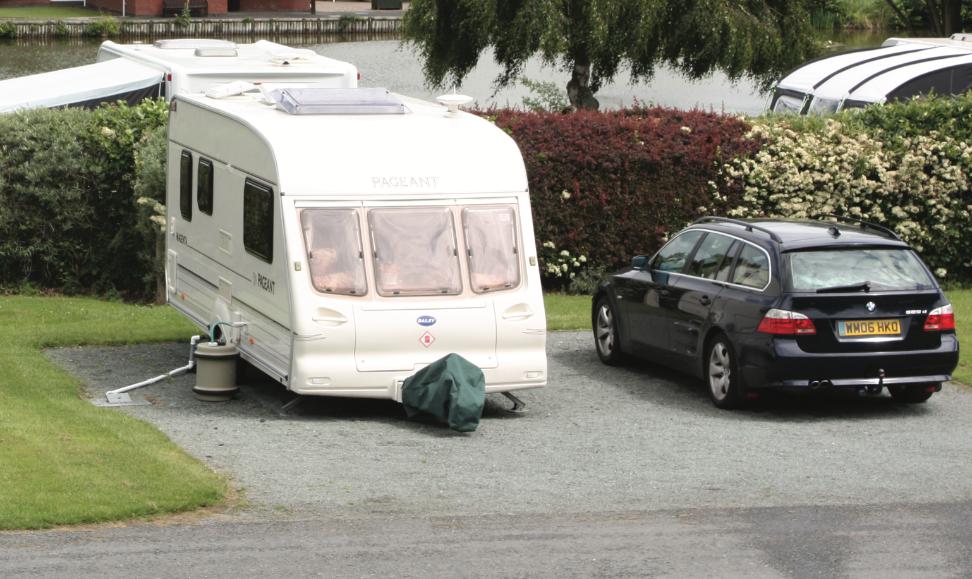
A pitch with a base made from a hard substance including gravel, Tarmac or concrete. In winter, and in wet or muddy conditions, these pitches are preferable to grass pitches, as you’re less likely to sink into the soft surface or get your outfit muddy.
Hitch
The mechanism at the front of the caravan’s A-frame that attaches your caravan to the towball on your car.
Hitch-head stabiliser
A type of towing stabiliser that’s incorporated into the caravan’s hitch. It clamps small friction pads tightly onto the car’s towball, when the stabiliser handle is pressed down, and works by applying friction to the tow ball.
Hitchlock

This security device prevents the caravan hitch from being connected to (or removed from) a tow ball, by blocking access to the hitch-release handle. Usually made from strong steel, they are locked in place with a key.
When the caravan’s unhitched, the hitchlock can be combined with a towball blank to prevent another towball being inserted into the ‘cup’.
Hook-up
See: Mains hook-up.
Island bed
A bed that can be walked around on three sides.
Jockey wheel
The small wheel at the front of a caravan, fixed to the A-frame. It supports the forward end of the caravan and makes manoeuvring an unhitched caravan easier.
The jockey wheel can turn 360° and may feature a hard plastic wheel or a rubber pneumatic one. The wheel is on the end of an extending post and can be wound up and down with a handle to level the tourer.
When not in use, it is raised and locked firmly in position with a screw-in clamp handle.
Kerbweight
The weight of tow car, including a tank of fuel, but excluding passengers. The weight in kgs is usually found on a data plate inside one of the front door jambs.
Leisure battery

A 12v caravan battery used to power the lighting and other low-current devices when the caravan is not on mains hook-up. They often look similar to a car battery, but don’t have the high cranking power needed to start a car – instead they give a lower, consistent output for a longer time.
Leisure battery output/stored energy is expressed in ampere-hours (Ah). A smaller battery may be 65Ah, while one designed to power devices like motor movers, that require more current may be 110Ah.
Leisure batteries come in different forms, including lead-acid, AGM, Gel and lightweight/high-power lithium batteries.
Living Space
The living space is an integral part of a caravan, providing a comfortable and functional area for occupants to relax, dine, and sleep while on the move.
It refers to the interior space of the caravan that is specifically designed to meet the needs of travellers and recreate a cosy home environment within the confines of a mobile unit.
The layout and size of the living space can vary significantly depending on the type and model of the caravan.
Load index
Found on tyre side walls, this number indicates a tyre’s maximum, safe load-carrying capacity.
Mains hook-up
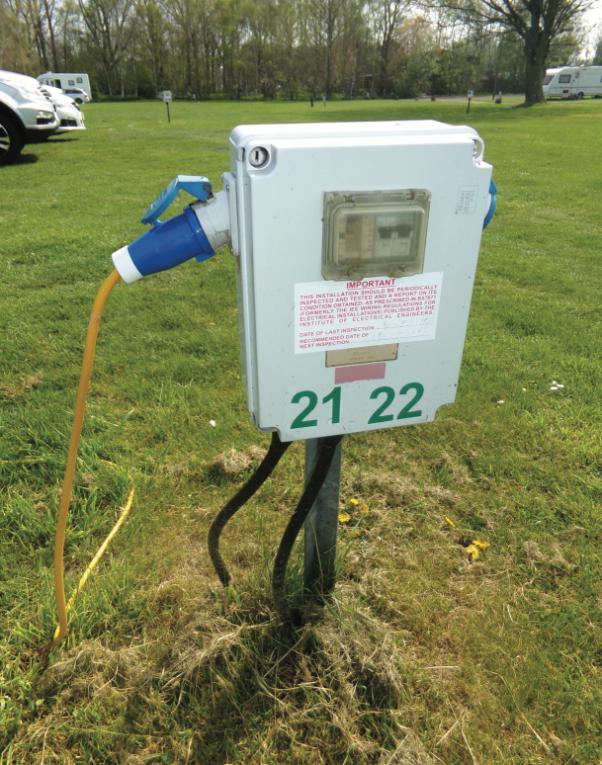
This is an outdoor power point found on a campsite pitch. Usually, the electric hook-up is on a post, which may have two points, including one for the next-door pitch.
Connect your caravan to the hook-up post with your caravan’s mains power cable. You’ll then receive 230v mains electricity in your caravan, meaning you can use the heating, microwave, and oven without flattening/damaging the leisure battery.
Mains hook up posts usually feature a circuit breaker which will cut-out if you overload the post by using too many devices at once. Typically, a post will deliver between 6amps (on some sites in Europe) and 16amps (many UK sites), after which it will cut out and need to be reset.
Also known as electric hook-up or EHU.
Manufacturer’s braked towing limit
The maximum weight of a braked trailer that a tow car will pull safely. Pulling away on a 1-in-8 gradient incline confirms the figure. The ‘braked towing limit’ figure can be misleading, and lead to unsafe towing. See: 85% rule.
MIRO
(Mass In Running Order) – The unladen weight of a caravan before it’s filled with holiday payload – clothes, food, and equipment, etc.
Miro includes all standard fixtures and fittings, liquids (in the heater, flush and water tank), plus the gas bottle. Strangely, the weight of the leisure battery is not included.
MTPLM
(Maximum Technically Permissible Laden Mass) This is the maximum total weight (in kg) a caravan should be, with all your equipment, food, clothes, etc on board. You should never exceed this weight. You’ll find it on the weightplate near the door.
Motormover
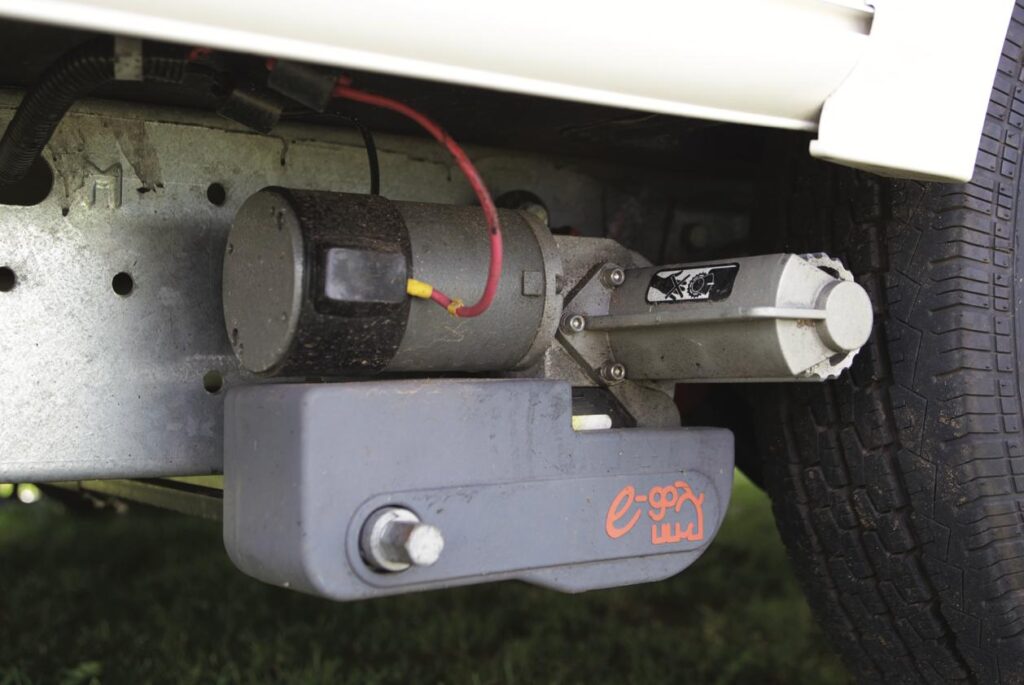
A powerful electrical device used for manoeuvring a caravan when it is not hitched to a tow car. The motor mover rollers slide out and press into the caravan’s tyres. They can then be controlled with a handheld remote, to turn and propel the tourer.
National Caravan Council (NCC)
This caravan trade association represents manufacturers, suppliers and dealers in the caravan industry, and strives to improve many aspects of the caravanning lifestyle.
The NCC makes sure that new caravans follow safety regulations, and it manages a number of quality and security initiatives including CRiS and AWS.
Nearside
The side of the caravan nearest to the pavement when travelling on the left- hand side of the road (the passenger side). In the UK, entrance doors are positioned on this side of the caravan.
Nose-down attitude
Most caravans tow most stably and safely if they are hitched with a slightly nose-down angle. Some pick-up and van-based tow cars require their towbars to be lowered to achieve this angle.

Noseweight
The weight pressing down on your tow car’s towball by the caravan’s hitch when the caravan is attached. It’s usually expressed in kg. Towcars and towballs have a noseweight limit which shouldn’t be exceeded.
Normally this is between 60kg and 120kg. You can manage the noseweight by moving the contents of the caravan around, for example. A very full front gas locker (containing, say, heavy wheel and hitchlocks) is likely to increase the noseweight. Moving these items nearer to the axle should lower it.
Noseweight gauge
A short, post-shaped device, that’s positioned between the hitch-cup and the ground. It displays the weight pressing down on the hitch (the noseweight) once the jockey wheel has been wound up.
Off-grid caravanning
Off-grid caravanners are totally self-contained, and don’t require electric hook-up or mains water/drainage to function. This is achieved by managing electricity and water usage, and by relying on solar panels and large leisure batteries to maintain an electric supply. Typically, off-grid caravanners do not use generators.
Offside
The side of a caravan away from the kerb when driving on the left-side of the road (the driver’s side). European caravans often have their doors on the (UK) off-side.
Outfit
The term for a combined tow vehicle and caravan.

Overrun brakes
The braking system utilised on caravans. As the tow car slows, the caravan pushes forward, compressing the hitch mechanism. This in turn activates the caravan brakes via cables, slowing it down.
Pendulum effect
This is the effect created when too much weight is placed too far back in the caravan, causing it to start swinging back and forth like a pendulum. This can be extremely dangerous, but is usually easily remedied by moving weighty items around inside the caravan. See: Snaking
PDI
A pre-delivery inspection is the final checks made by a manufacturer or dealership before a caravan leaves its premises. These inspections should include hundreds of different checks, making sure the caravan leaves the facility in the best condition possible.
Pop top
See: Elevating roof.
Propane gas
Propane is a form of Liquified Petroleum Gas (LPG) that is bottled for caravanners. It’s an alternative to Butane and has a boiling point of -42°C, so can be used in the very coldest temperatures. It’s generally found in red gas bottles.
Rally

A caravanners meet-up or holiday, where a group of caravanners, say, from a club, all stay at the same campsite and have an agenda of events and activities.
Pic 29
Roofbox
A plastic storage box that attaches to rails on the roof of the car to provide extra storage on the move. Roofboxes are a valuable way to carry holiday equipment, as they keep weight out of the caravan for a better balance between car and caravan.
Rooflight
A window panel in the ceiling of the caravan, designed to let light flood in. Most can be opened to improve ventilation and incorporate black-out blinds and flyscreens.
SafeFill
SafeFill is a private company that supplies gas bottles designed to be self-filled at petrol forecourt LPG pumps. This gives access to much cheaper gas: on the forecourt, you typically pay around £1.20 per litre, whereas bottled gas costs upwards of £2 per litre.
Seasonal pitch
When you pay a campsite to leave your caravan on a pitch for an entire summer season, or some other agreed time.
Single-axle caravans

Tourers with two wheels, one on each side. These are easier to manoeuvre on site as you can turn them on the spot. They’re also cheaper to maintain and service. Also see: Twin-axle caravans.
Slide-out
A small number of caravans have sides that slide-out electronically, to create more space inside. Slide-outs are most popular in fifth-wheeler caravans and in the USA.
Snaking
Snaking occurs when a caravan becomes unstable at speed and begins to oscillate from side to side in a sort of pendulum effect. Poor caravan loading and speeding, high winds or other vehicles can cause it overtaking, at speed and destabilising the van with their deflected wind.
AL-KO ATC is designed to correct uncontrollable snaking.
Stabiliser (AL-KO)

A hitch-head safety device which minimises unwanted movement of the caravan by controlling how easily the caravan hitch can pivot on the tow ball.
Thatcham
Thatcham is a security enterprise which tests and rates alarms, trackers, locks, and other security devices. Thatcham-approved devices are considered the best by many and can deliver insurance discounts if used.
Towball
The 50mm metal ball on the back of your tow car, which slots into the receiver-cup on the caravan’s hitch head and allows the van to pivot when it’s being towed. Towballs should be bare metal and not rusty or lubricated, especially if using a stabiliser as the friction pads can become contaminated.
Tow hitch
The ‘cup’ part of the caravan that clamps onto the tow car’s towball, creating a secure connection for towing. It’s also the point where you measure the caravan’s noseweight.
Tow matching
Online services which help you match your tow car to a suitable caravan. They compare kerbweights and MTPLMs to find suitable matches.
Island bed

An island bed is accessible from three sides with the ‘headboard end’ against either a side wall or end wall. When the bed comes off one of the caravan’s side walls, it’s known as a transverse island bed.
Twin-axle caravans
Twin-axle caravans are more stable than single-axle tourers; and less likely to suffer from snaking. Twin-axle caravans are considered easier to reverse as their response to the car’s steering inputs is slower and more accurate.
Twin-axle caravans are more expensive to insure, maintain, and service than single-axle vans.
Tyre pressure monitoring system (TPMS)
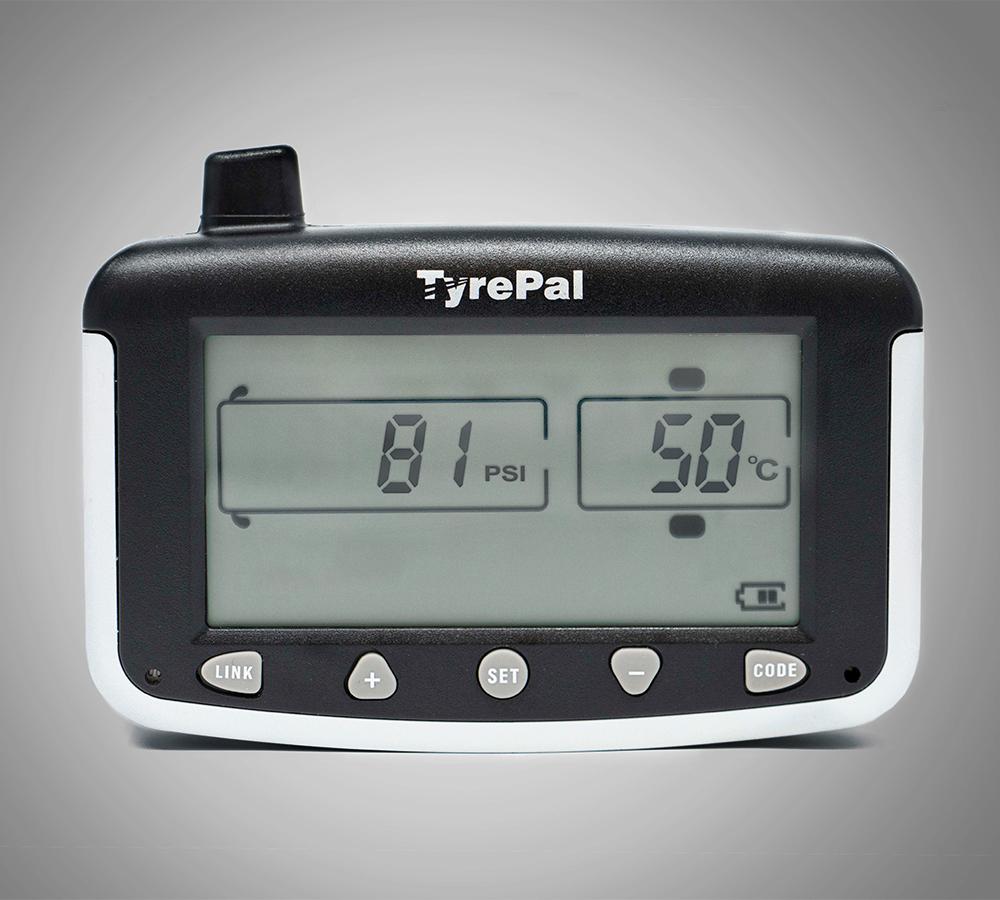
These smart devices relay tyre-pressure information to the towcar instantly, allowing the driver to see the state of inflation of their caravan tyres, and if any have deflated or have lost some pressure.
Underfloor heating
Underfloor heating in caravans is growing increasingly popular, with systems made by Whale and by Truma. They’re considered to give a more even heating effect than blown-air heaters, and take up less space than Alde heating with its radiators.
Payload
This is the amount of kit, food, clothes, etc you can load into the van without exceeding the MTPLM weight. Subtracting the MIRO weight from the MTPLM can calculate it.
Typically, it’ll be 100-200kg. Adding appliances like motormovers, air conditioning units, and satellite dishes uses up your valuable payload allowance.
VIN number
This unique 17-digit identification number is typically etched on windows, printed on a caravan’s registration documents, and die-stamped into the chassis. Avoid buying any caravan if it seems these have been tampered with.
See: CRiS.
Waste-water container
A portable water carrier that collects grey-waste water from the caravan for disposal at the CDP.
Water carrier

A container for transporting water from the site tap to your caravan. The best are barrel-shaped with a long handle, making them easy to roll along, even when full. See: Aquaroll
Water ingress
When water finds its way into the caravan structure through damaged or deteriorated seals, screw and bolt holes or panel joints. Once inside, it can cause untold damage, rotting absorbent materials, including wooden framing, and causing mould and mildew.
Weightplate
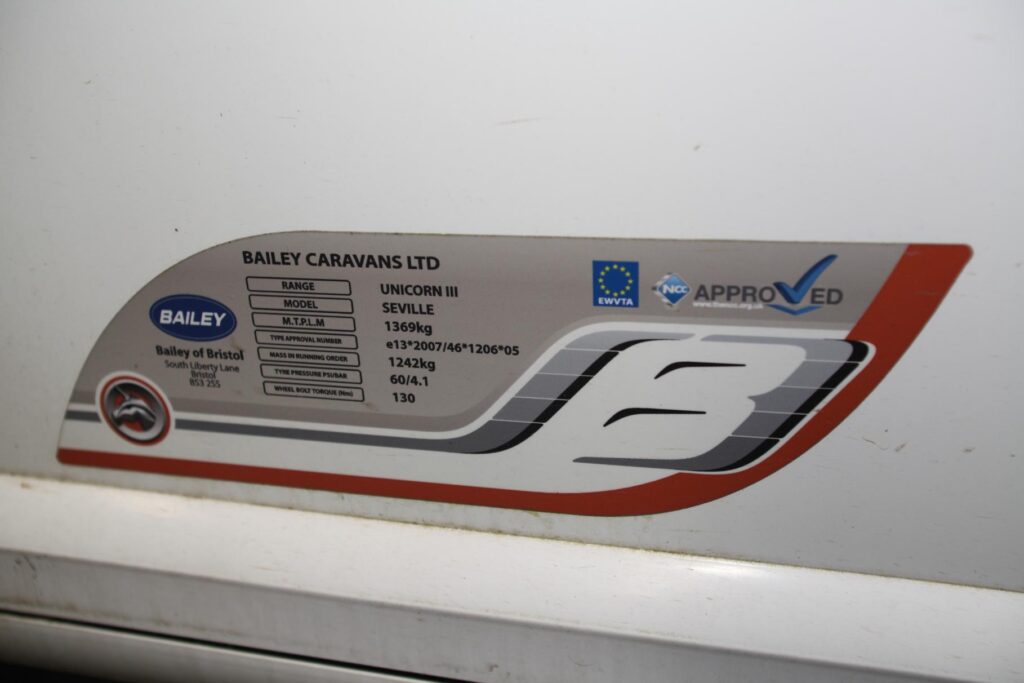
The weightplate is found next to the door on most caravans and displays all the key weights and other important information. You’ll find those crucial MTPLM and MIRO weights here.
Avoid buying if the weighplate is missing or has been tampered with.
Wet locker
A waterproofed storage area, usually isolated from the rest of the caravan, and accessible through an external locker door. They’re perfect for storing wet, dirty, or muddy items.
Wheel lock

A lock that affixes securely to a caravan’s wheel, preventing it from being moved. Some wrap around the wheel and clamp in place, while others bolt through the wheel spokes into a receiver plate behind the wheel.
This type, like the AL-KO wheel lock, is considered the best and attracts the biggest insurance discounts.
The author 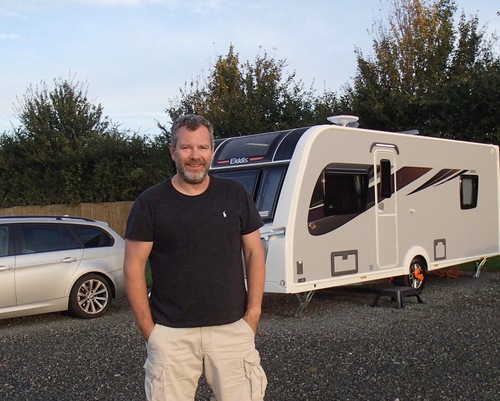
John Sootheran is a seasoned caravan and motorhome journalist who previously edited Caravan magazine, and now writes for Britain’s best-selling caravan magazine, Practical Caravan, along with Practical Motorhome and the Camping & Caravanning Club magazines. He also works with a number of major caravanning brands.





